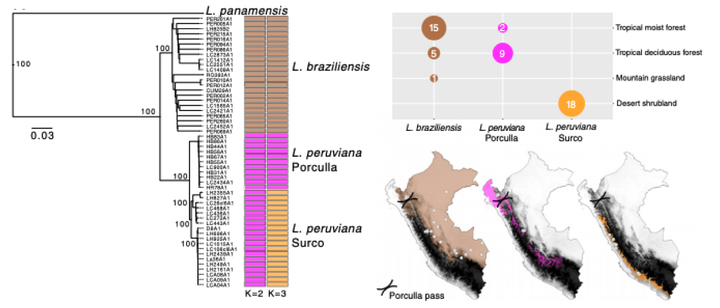Ecological divergence and hybridization of Neotropical Leishmania parasites

Abstract
The tropical Andes are an important natural laboratory to understand speciation in many taxa. Here we examined the evolutionary history of parasites of the Leishmania braziliensis species complex based on whole-genome sequencing of 67 isolates from 47 localities in Peru. We first show the origin of Andean Leishmania as a clade of near-clonal lineages that diverged from admixed Amazonian ancestors, accompanied by a significant reduction in genome diversity and large structural variations implicated in host-parasite interactions. Within the Andean species, patterns of population structure were strongly associated with biogeographical origin. Molecular clock and ecological niche modeling suggested that the history of diversification of the Andean lineages is limited to the Late Pleistocene and intimately associated with habitat contractions driven by climate change. These results suggest that changes in forestation over the past 150,000 y have influenced speciation and diversity of these Neotropical parasites. Second, genome-scale analyses provided evidence of meiotic-like recombination between Andean and Amazonian Leishmania species, resulting in full-genome hybrids. The mitochondrial genome of these hybrids consisted of homogeneous uniparental maxicircles, but minicircles originated from both parental species. We further show that mitochondrial minicircles-but not maxicircles-show a similar evolutionary pattern to the nuclear genome, suggesting that compatibility between nuclear-encoded mitochondrial genes and minicircle-encoded guide RNA genes is essential to maintain efficient respiration. By comparing full nuclear and mitochondrial genome ancestries, our data expand our appreciation on the genetic consequences of diversification and hybridization in parasitic protozoa.